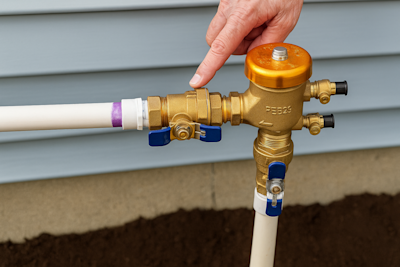Valves are indispensable components in any piping system. They control the flow of liquid or gas, making them critical for safety, efficiency, and operational effectiveness. Among the different types of valves available in the market, Globe Valves hold a special place. They are popular across various industries due to their exceptional reliability and versatility. In this article, we will delve deep into understanding what Globe Valves are and how they work, their types, and possible applications.
What is a Globe Valve?
A Globe Valve is a type of linear-flow valve known for its spherical shape. The inner parts of a Globe Valve consist of a movable disk-type element and a stationary ring seat based within its spherical body. The design of these valves ensures a good shut off, providing tighter seals than other types of manual valves.
Anatomy of a Globe Valve
Globe Valves have a distinct construction that sets them apart from other valve types. Here is a generalized structure of a Globe Valve:
- Body: The body of a Globe Valve typically has a spherical shape, from which the valve gets its name.
- Bonnet: This part is attached to the body of the valve and provides a leakproof closure.
- Disc: The disc is the movable part that allows or stops the flow of fluid.
- Seat: The valve seat is the interior surface within the body which comes into direct contact with the disk.
- Stem: The stem connects the disc with the handle or actuator used to control the valve.
Working Mechanism of a Globe Valve
Understanding how a globe valve works can help in troubleshooting issues and ensuring its optimal operation.
When a globe valve is in the open state, the fluid flows through the space between the disc and the seat. As the valve is closed by turning the wheel, the stem and the disc lower into the valve body, decreasing the space for fluid to flow. When the valve is completely closed, the disc and seat fully isolate the flow path, preventing the fluid from crossing.
Different Types of Globe Valves
There are various types of globe valves designed to meet specific operational requirements.
Z-Type: This is the most common type of globe valve. It has a Z-shaped diaphragm, making a 90-degree path that ensures smooth and low-pressure drop operations.
Y-Type: Y-Type globe valves have their stem and seat at a 45-degree angle. It is suitable for high-pressure conditions due to its streamlined flow, reducing pressure drop.
Angle Type: As the name suggests, the fluid's flow path in an Angle Type globe valve changes direction by 90 degrees without using an elbow pipe. This type helps with space and cost savings.
Applications of Globe Valves
Globe valves find their use in a broad range of applications due to their excellent control capabilities and tight sealing. Here are few applications:
- Throttling Services: These services often require precise control over the fluid flow, which is where globe valves come into play.
- Steam Systems: Their robust shut-off capabilities make them ideal for deployment in steam systems.
- Cooling Water Systems: Globe valves are used in cooling water systems, primarily where flow needs to be regulated and shut-offs are necessary.
- Fuel Oil Systems: For systems that deal with the transport of fuel oil, the secure closing mechanism of globe valves is critical.
Frequently Asked Questions about Globe Valve
What is the structure of a Globe Valve?
A typical Globe valve is made up of the body, bonnet, disc, stem, and a handwheel. The body houses the valve seat where the disc (or plug) moves to start or stop flow. The bonnet contains the stem, which connects to the disc, and this part is responsible for the movement of the disc. Lastly, the handwheel adds manual control to the stem's movements.
Can a Globe Valve be used for throttling?
Yes, a Globe valve is often chosen for throttling due to its phenomenal ability to regulate flow. By adjusting the valve stem and disc's positioning, you can effectively control the amount of fluid flow passing through the valve. Please note, prolonged use in the throttling position may cause wear and tear on the valve seat and disc.
What are the different types of Globe Valves?
Globe valves come in three main types: straight-flow, angle-flow, and cross-flow. Straight-flow, or Z-type, is the most common and has a horizontal flow pattern. Angle-flow, or Y-type, is designed to limit pressure losses and can handle more severe applications due to its angled design. Cross-flow, or T-type, has an inlet and outlet at 90 degrees, providing a solution for applications that demand an alteration in pipe direction.
Where are Globe Valves typically used?
Globe valves are used in a variety of applications, including power plants, shipbuilding, heating and ventilation systems, and more. Their reliable operation and excellent shut-off capabilities make them an ideal choice for controlling fluid flow for both gas and liquids.
How to maintain a Globe Valve?
Maintenance will depend on the exact Globe valve you have. However, a general guide includes regularly checking for leaks, monitoring overall valve performance, and ensuring that any movable parts, like the stem and handwheel, are properly lubricated.
Can Globe Valves handle high-pressure environments?
Yes, Globe valves can certainly handle high-pressure conditions. With robust construction and an efficient design, they can withstand pressures in piping systems. However, it's crucial to select a Globe valve designed to handle the specific pressure range of your application.
Is it possible for Globe Valves to suffer from damage?
Like any mechanical device, a Globe valve can experience wear over time. The most common damage may occur on the valve seat or disc, particularly if the valve is frequently used for throttling. Regular inspection and maintenance can help prevent severe damage and extend its life.
Are Globe Valves suitable for Gas service?
Absolutely, Globe valves are not only used for liquids but also for gases. They can provide a tight seal, making them quite effective for gas service.
Is it safe to use Globe Valves?
Globe valves have a history of reliable operation and are constructed to meet various standards and certifications, thus ensuring safety. However, like any valve, it needs to be correctly installed, operated, and maintained to avoid safety issues.
Pros of Globe Valve
Efficiency
Globe valves are incredibly efficient when it comes to throttling the flow of fluid in a pipeline. This is because their design allows for a more significant drop in pressure, which is handy when you need to slow down the movement of fluid or gas within a pipeline. Compared to other valves, globe valves offer superior throttling capabilities.
Versatility
Globe valves are versatile, making them ideal for a variety of applications. They can be used in industries such as oil and gas, chemical processing, power plants, and more. This versatility comes from their ability to handle different fluid types, various temperature ranges, and diverse pressure environments. They can also be used both indoors and outdoors.
Durability
These valves are known for their durability and can last a long time with proper maintenance. This is because they are typically made from robust materials like cast steel, stainless steel, and bronze, which can withstand harsh environments and resist corrosion. The durability and longevity of globe valves make them a cost-effective choice in the long run.
Precise Control
Perhaps one of the most significant benefits of globe valves is their ability to offer precise control over the fluid flow. Their design allows gradual opening and closing, thereby reducing the chances of water hammer. They also feature a movable disk-type element and a stationary ring seat in a generally spherical body.
Lower Leakage Possibility
Compared to other types of valves, globe valves have a lower possibility of leakage, primarily due to their tight shut-off feature. This feature can be especially beneficial in toxic or hazardous fluid applications, where leakage can lead to safety risks and environmental concerns.
Easy Maintenance
Globe valves are easier to repair and maintain compared to other types of valves. Their parts are readily available, and due to their simple construction, technical knowledge requirements for their maintenance are lower. This simplicity of maintenance results in lower downtime and, consequently, higher productivity.
Cons of Globe Valve
High Pressure Drop
One significant drawback of using globe valves is the high pressure drop that results from their design. They aren't suitable for applications that require a minimum pressure drop, as their design inherently causes a much higher drop in pressure when compared to other types of valves.
Cost
Another downside to globe valves is their cost. They are typically more expensive than other types of valves due to their complex design and the heavy-duty materials used to manufacture them. Price becomes a major consideration when you need a high quantity of valves for larger systems.
Limited Size
Globe valves are generally not available in large sizes due to their design. Therefore, they may not be the best choice for applications that require large diameter pipes. Most globe valves limit out at around 12 inches in diameter.
Weight
Globe valves are usually heavy, which makes them difficult to handle and install, especially if you are dealing with larger valves. It also increases the cost of shipping and storing these valves, which can be an important consideration for some operations.
Inefficiency in Large Systems
While globe valves provide excellent control in smaller systems, they can be quite inefficient when used in larger systems. The high pressure drops and low flow can lead to increased energy costs in larger industrial systems.
Susceptibility to Cavitation and Choked Flow
Globe valves can be susceptible to problems like cavitation and choked flow in high velocity and high-pressure drop applications. Cavitation can cause damage to the valve components, shortening their lifespan and efficiency. Furthermore, choked flow can lead to a high noise level, which is undesirable in certain environments.
Myths and Misconceptions about Globe Valves
Globe valves, commonly used in a wide range of applications from home plumbing to vast industrial processes, are often misconstrued in many ways. This section delves into the popular myths and misconceptions surrounding this crucial mechanical device, fairly debunking the misconceptions while providing the correct and technical explanations.
Globe Valves are Stern Gate Valves
One common misconception is that globe valves and gate valves can be used interchangeably. This is far from accurate. Even though both valves control the fluid's flow, they serve different functions and operate fundamentally differently. A globe valve is designed to regulate the flow of a fluid, while a gate valve is intended for on and off control with low pressure drops.
Globe Valves Are Not Suitable for High-pressure Operations
This is one of the popular misconceptions. Globe valves can handle high pressure when designed and manufactured for such use. High-pressure globe valves are built with fortified bodies and tougher materials to endure the intense pressure conditions.
Globe Valves do not Support Throttling
This is a particular myth that needs debunking. Globe valves are renowned for their throttling capabilities. Unlike other valves, the globe valve's design inherently enables it to control the flow of fluids with exceptional precision, which makes them the preferred choice for throttling applications.
Throttling is Only Possible with Needle Valves
It is a popular belief that only needle valves can perform throttling. While needle valves are robustly suited for fine throttling, their larger counterparts, globe valves, can also handle the same function effectively. Since globe valves have a broader surface area due to their slightly bigger size, they can provide smoother control, especially for high-flow applications.
Globe Valves do not allow Full Open Flow
An often repeated myth is that globe valves do not support full open flow. Contrary to this belief, when a globe valve is fully open, it permits almost free flow of fluids, though with a relatively higher pressure drop compared to some other valve types due to its globe-shaped body.
Globe Valves have Fixed Orientation
Because of the globe valve's distinctive shape, it's often misunderstood that they have a fixed orientation. The truth is, globe valves can be installed in any orientation without affecting its performance, although the upright orientation is the most common due to the conventional vertical movement of valves and ease of maintenance.
Globe Valves are Difficult to Maintain
Another false perception is that globe valves are challenging to maintain. On the contrary, these valves have replaceable parts which make it rather easy to disassemble, service, and reassemble.
Globe Valves only have Manual Actuators
There is an inaccurate notion that globe valves come with manual actuators only. This belief is false as these valves can be automated and are compatible with pneumatic, hydraulic, and electric actuators in addition to the manual options.
Lasting Damage occurs if a Globe Valve is Fully Opened or Closed
Many believe that a globe valve might suffer lasting damage if subjected to either fully open or fully closed positions. This is a baseless assumption. Globe valves are designed and built to withstand these positions, and under normal operations, do not get damaged by being fully opened or closed.
Understanding the misconceptions about globe valves and addressing them is essential not only for the selection of the right type of valve but also for their proper maintenance and efficiency in operations. It helps debunk incorrect information that would otherwise lead to mishandling, misapplications, and unwanted damage. Therefore, a solid knowledge fortified with correct information is always the best tool.
Summary
So, there you have it. Globe Valve is one item you won't regret having in your toolkit. It's crucial for regulating the flow of liquids or gases in a pipeline, due to its simple yet efficient design. Fun fact - it got its name from the globe or ball-shaped body that contains the valve seat and disc. Truly, Globe Valve make the tough job of controlling and isolating the flow an easy one.
Have you ever wondered how engineers control or stop liquid or gas flows in large industrial pipelines? They rely heavily on a device known as the Globe Valve. What's pretty interesting is that these valves can also adjust the flow speed, allowing engineers to have precise control. So the next time you see a large industrial pipe, just know that there could be a Globe Valve working silently in there.
Life without the Globe Valve could be a bit more complicated. Imagine a world where controlling the flow rate of a large pipeline is all or nothing - a total nightmare, right? That's why engineers rely on these valves. They get the job done without causing a fuss. So next time you hear the term Globe Valve, remember it's one of those unsung heroes in the engineering world.
About KYPD Plumbing
KYPD Plumbing is a trusted, homegrown plumbing service provider based in the beautiful city of Lexington, KY. Born out of a sheer passion for providing top-notch services to our neighbors, we've managed to strike a perfect blend of professional expertise and friendly assistance. We're proud of our skilled team who put a dash of their personal touch into every task while upholding the highest standards of quality. At KYPD, we always strive to go above and beyond to keep your systems flowing without interruption, offering exceptional services for residential and commercial spaces, always putting our customers first. It's our deep-rooted commitment to our community that keeps our customers coming back, making us their go-to plumbing partner.
Tags: valve, plumbing, industrial machinery,














